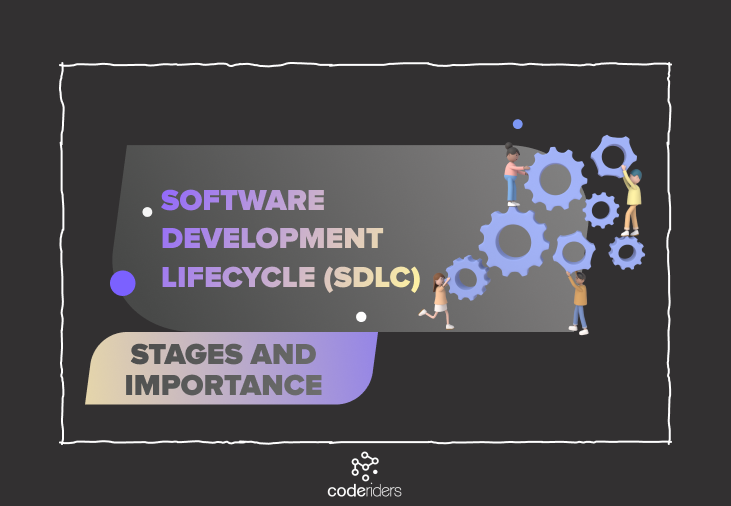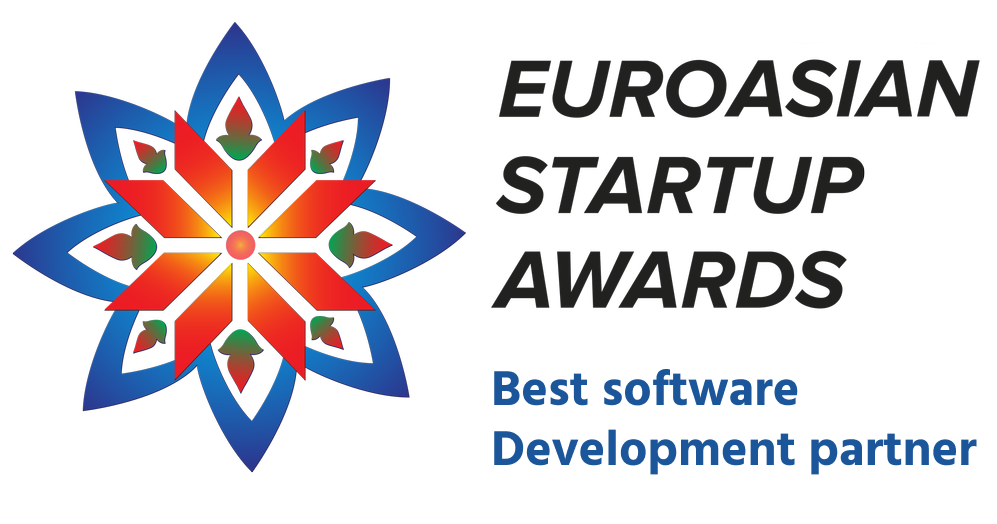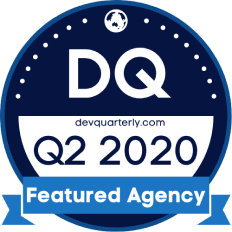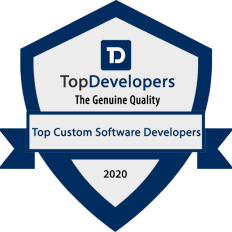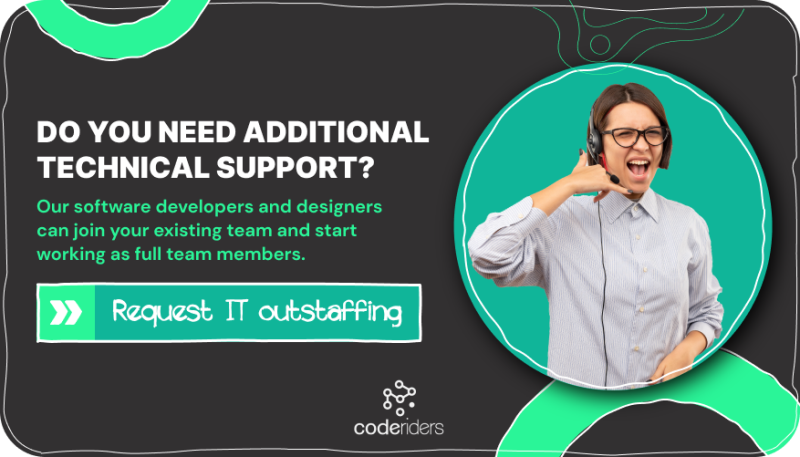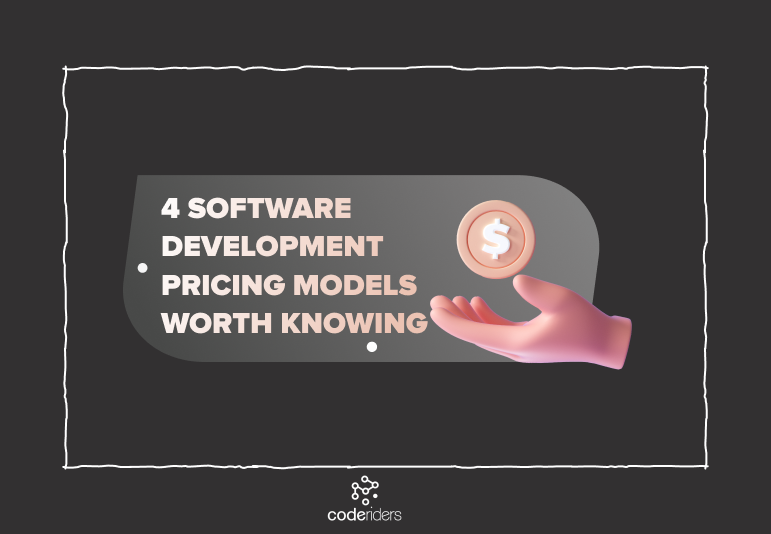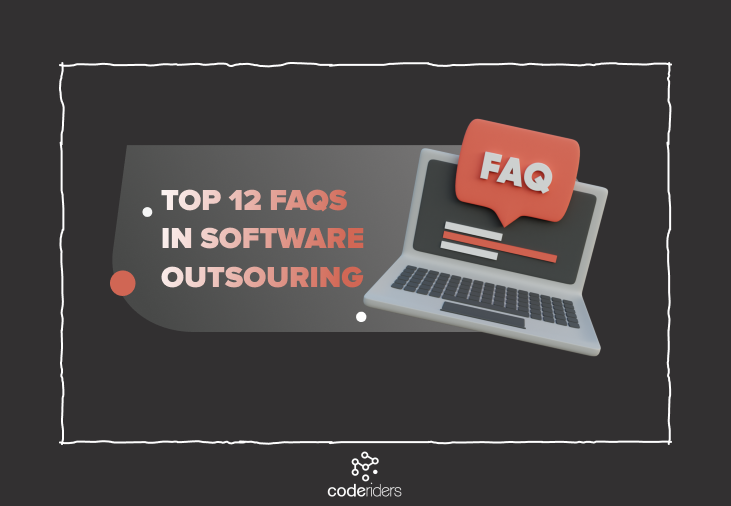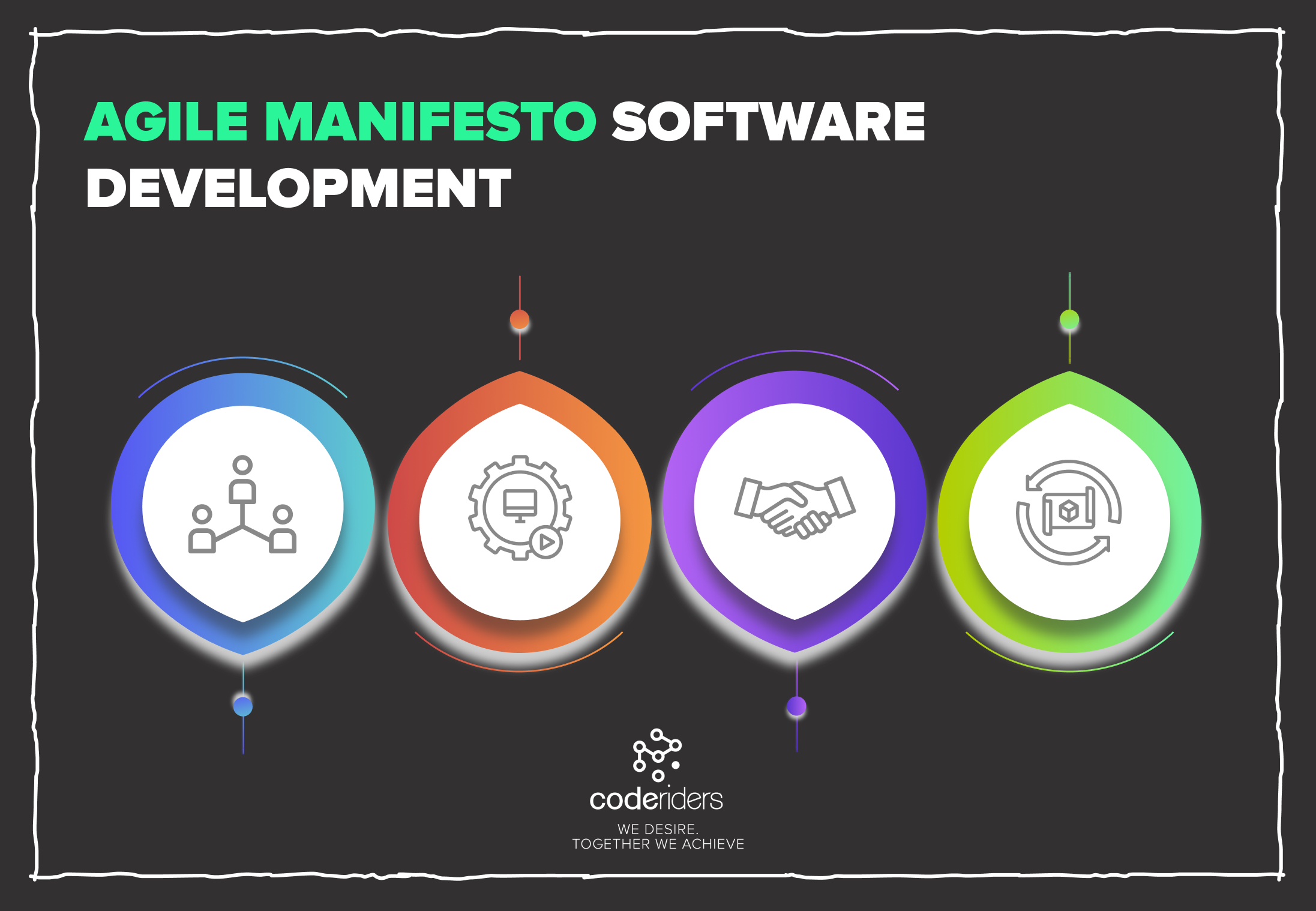What are the key driving factors for businesses worldwide to hire remote software engineers or software outsourcing companies?
- Reduce custom software development costs,
- Access world-class capabilities and software development services,
- Save time and money on the recruitment process of remote software developers,
- Save time and money on managing in-house software development teams,
- Increase the flexibility of scaling your projects,
- Amplified software development lifecycle (SDLC).
There is no need to be a technical person to work with software development teams. Nevertheless we advise having a clue about the software development process or software development lifecycle before working with a software house. As a software outsourcing company operating in the international IT market for 9 years, we decided to share how a beneficial software outsourcing process works.
Subscribe to Newsletters
What is SDLC?
SDLC (software development lifecycle) is the structure and step-by-step guide on how companies build software solutions. It breaks down the software development process into certain small stages.
At CodeRiders, we worked with companies at various stages of SDLC, for example, we had clients that wanted:
- To build software from scratch,
- To continue adding new features to already existing software,
- To complete a specific software development service,
- To maintain the support of their software,
- To rebuild an unsuccessful software project, etc.
get to know our team and software solutions
Therefore, software development partnerships highly depend on a specific situation. Having a basic understanding of a full SDLC ensures clear and transparent communication with your software vendor and paces up the after-all software development process.
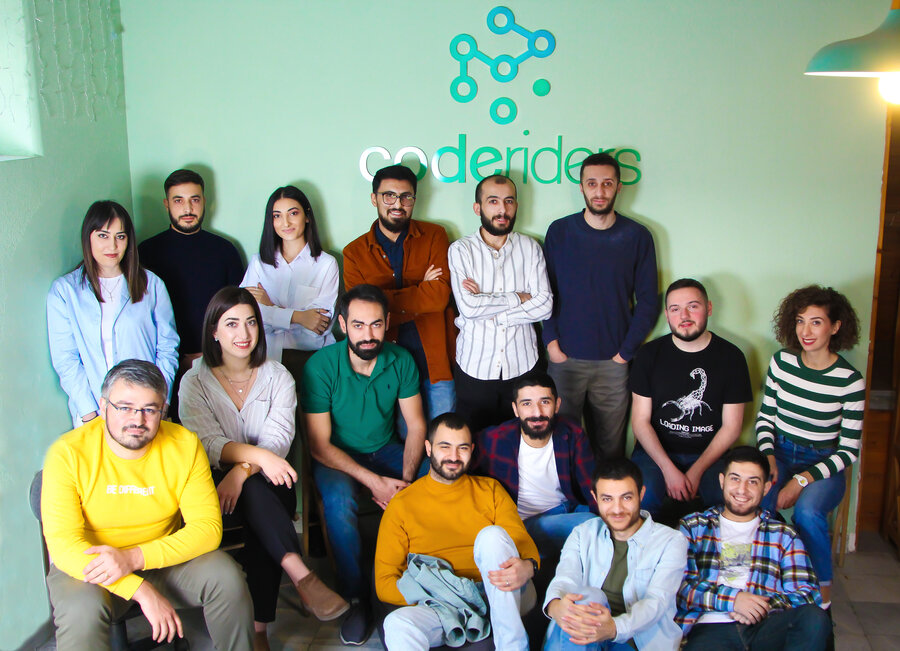
Which are the main stages of SDLC?
#1 Planning
It is the basic stage of the software outsourcing process. The planning stage should clearly define the scope of work and the project aim.
This stage is usually the “pre-contacting” stage with your software vendor. At this stage, you should figure out what you want in the first place, then picture your top software development company that can do the job. It is also advisable to prepare a software requirement list to share with your technical partner.
Top software development companies give estimates or solutions if they have at least some basic information about the problem. We at CodeRiders made a guide to writing a simple and easy SOW document with a real example. You can download it below for free of charge.
free white paper
how to write a solid scope of work sow
After figuring out your purpose and expectations, you go on with:
- Identifying and gathering your current issues,
- Discovering the target market and customers’ expectations,
- Defining who you want to include in your custom software development project (back-end, front-end, full-stack remote software engineers, UI/UX designers, project managers, product managers, QA specialists).
- Identifying the hierarchical structure of employees and responsibilities,
- Defining your approximate budget.
IT RFP or information technology request for proposal is an alternative to an SOW document. Whether you provide IT RFP or SOW document to your software vendor, the purpose of both docs is to clearly explain the client's requirements out of the software development partnership.
Stage #2 Design and Prototyping
This stage models how the software application will work. The phases of the design and prototyping stage include:
- Software architecture: This is the organization of a system. At this stage, businesses with or without the help of their software vendors choose the tech stack, the overall design concept of the project, best practices, use of templates, the principles used to design the software, the environment in which they operate, etc.
- User interface (UI): UI shows the customer interaction with software and the software reaction. UI includes display screens, keyboards, and desktop appearance.
- Operating systems or platforms: These are the places where a specific application operates, for example, Android, iOS, Linux, Windows, maybe gaming consoles, etc.
- Programming: This includes not only the tech stack of specific software but also methods of solving problems (if necessary) and application features.
- Communication: This defines the software communication methods with other assets, for example, the central server, or other instances of an application.
- Security and control: Security defines which measure software engineers take to secure the application. It often includes SSL traffic encryption and secure data storage.
Prototyping transfers from researching and brainstorming to acting. At the software documentation and design stage, companies start writing down their requirements and expectations from the software outsourcing partnership.
Companies document what they need and start searching for appropriate candidates to work on their projects.

For example, a transportation and logistics organization may need a PHP development company to build software that will:
- Accelerate and facilitate the communication process between the employees and partners,
- Include a tracking platform for customers where they will see updated information about the shipment,
- Have a private CRM and inventory management system for employees to connect with customers and colleagues from various departments,
- Have an online paying platform.
At this stage, a company files up all its requirements in a single document and starts looking for software vendors providing similar software development services. Finding qualified vendors is another important topic. Companies sometimes write down the most important questions to ask software houses for choosing the most suitable software development partner. If you are more interested in how to find a qualified software outsourcing company, you can check our article here.
Consulting with the potential software development team and exchanging opinions is extremely useful at this stage. Back and forth consultations are an open window for successful communication. For instance, a logistics company may consult with their potential software vendor about the tech stack and required professionals.
At CodeRiders, we make sure that everything is clear before starting the actual software development process. We may sit down for a long video call if needed or keep in touch via e-mail. It depends on how much assistance clients need. If the software outsourcing partnership is something new to the client, we make sure they understand all the core values and details in this cooperation model. For example, if the client does not know which tech stack to choose, we hold on to in-detail conversations, understand their needs, and offer the tech stack accordingly. If clients' requirements do not match our capabilities and tech stack, we inform them about it and do not proceed with the project.
Stage #3 Coding and Implementation
After agreeing on the resources involved in the software development process, time and cost estimates, and software development engagement models, the two parties finally start the coding and implementation process. The main focus at this stage is to keep clear and transparent communication and deliver high-quality software solutions and successful software implementations. The coding and implementation stage is the longest one in the entire protocol as this is when the actual software is built.
At CodeRiders, our main priority is to deliver clear code without wasting time. For example, although all our software engineers are comfortable communicating in English, we pay special attention to those projects where there is no project manager. For such projects, we choose those software engineers who are the most fluent in English.
Stage #4 Testing
Before your code goes live, it is necessary to make sure it operates correctly. Software testing is crucial for such purposes. It is an inseparable phase of the software development lifecycle. Software testing prevents bugs, reduces costs, and improves performance. In software outsourcing companies, there are QA specialists (quality assurance specialists) who go over the code, make sure it operates correctly, find errors, and work closely with software developers to correct them.
Some companies prefer to hire their individual, in-house QA specialists, others prefer to hire QA specialists directly from the software vendors. There is no right and wrong approach to this question. It depends on the company culture. At CodeRiders, we can work both ways. We can offer our QA specialists or work closely with our clients’ in-house QA specialists.
Stage #5 Maintenance and Support
The last stage of the software development lifecycle is maintenance and support. Software development does not end after the final release of the product. There may be errors during the software usage process. Your product may constantly need changes, upgrades, and updates for better user experience, add-ons based on specific changes in business, etc. Clients usually keep in touch with their software development company for ongoing issues or hire other software engineers upon request.
At CodeRiders, we are responsible for our projects. If our clients need further support, we are always happy to keep track of the products.
Why Companies Trust the SDLC models offered by CodeRiders
At CodeRiders, we recommend the Agile software development model. The agile software development methodology puts customer needs first. This methodology makes the software highly responsive to customer feedback. On the other hand, it is perfect for those software development projects that work with milestones. Agile heavily relies on productive and transparent communication between the software development team and the client.
CodeRiders works on various custom software development projects despite their software development stage. We have experience working with companies from numerous industries such as Healthcare, E-commerce, Retail and Wholesale, Media and Entertainment, Finance, Logistics, and E-learning industries. We have been operating in the international software development industry for 9 years.

We worked 34 clients and had more than 300 projects with 180K+ users. We provide senior, medium, and junior-level software developers, designers, and other IT-related specialists such as project managers and QA specialists. CodeRiders software development services include:
- Web development and design,
- Custom software development,
- Software outsourcing and outstaffing,
- Mobile development and design,
- Maintenance and support.
CodeRiders is a trusted and appreciated software outsourcing firm. It constantly makes in the charts of the top software development companies of such famous IT directors and awards as Clutch.co, EuroAsian Startup Awards, TopDevelopers, TechReviewer, Goodfirms, Global Startup Awards, Best Startup Asia, etc.
In conclusion, understanding SDLC is crucial before hiring software outsourcing companies. A clear picture of a successful software development process amplifies your ability to make the right decision.
Having
development
needs?
CodeRiders will address your web and mobile development challenges by creating custom software, helping with outsourcing services, or just consulting on your software development requirements.



